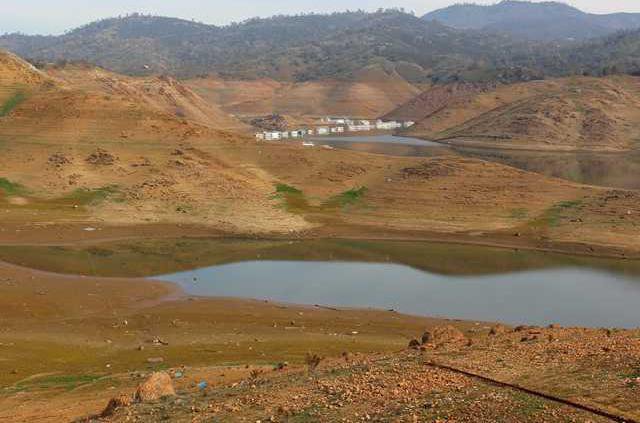El Nino — the wet weather pattern that California is being told will likely be in place this winter — is far from a slam dunk.
And even if it materializes, it could leave much of the Sierra that’s critical for more than 60 percent of the state’s developed water supply relatively high and dry. There have been previous El Nino weather systems that have even produced below normal rain and snow.
It is why news reports and blogging that are describing the potential weather pattern as “a Godzilla El Niño” is worrying water managers such as South San Joaquin Irrigation District General Manager Jeff Shields who fear people will ease up on water conservation.
The National Weather Service’s Climate Predictions Center has 30 models that between them indicate there is a 90 percent chance of an El Nino this winter. The models are done by meteorologists at university and weather service stations around the globe. When taken together, the majority are projecting a wetter than typical winter.
“Even if it brings a normal than wetter year to parts of California — most specifically the south state — past patterns show that there isn’t necessarily above normal precipitation in the Sierra,” Shields told the Manteca Rotary last week when they met at Ernie’s
Shields cited records of five various Sierra stations that monitor snow and rain in the central Sierra that includes the Stanislaus River Basin that helps supply area farms as well as the cities of Manteca, Lathrop and Tracy. There is just better than a 50 percent chance it will deliver above normal precipitation.
Shields has noted even if there is a normal year of rain and snow on the Stanislaus watershed or a bit above average it won’t return water supply conditions to normal.
That’s because the safety net of reservoirs created for California has worked but after four years of severe drought it means the state may not be able to survive a fifth year of drought without even more draconian water cuts.
“We have been able to get by due to reservoir storage,” Shields said. “But they are now all at record lows.”
And not very many are in worse shape than the state’s largest reservoir — New Melones. The Stanislaus River dam can hold back 2.4 million acre feet of water. As of Tuesday there were 322,387 acre feet in the reservoir as the region heads into nine weeks from mid-August to mid October that are typically the heaviest water use period.
An even if it is a wetter winter than normal, Shields said it is too risky to start thinking California is out of the woods.
“It isn’t unusual for California to have 40 to 50 year droughts with a wet year here and there breaking it up,” Shields said.
Data researchers have gleaned from tree rings and other sources shows California was historically dry until about the 1500s to 1600s. It is then when a wet pattern started.
As far as the Stanislaus River watershed is concerned, Shields can point to a disturbing trend now underway.
SSJID along with Oakdale Irrigation District share the first 600,000 acre feet of water from rain or snowmelt each weather year that starts on Oct. 1
Seven times between 1895 and 1975, the watershed produced less than 600,000 acre feet in a water year. But from 1976 to 2015 it has failed to do so 14 times.
Shields is speaking tonight about water and what the future may hold at 7:30 p.m. during the Manteca Patriots’ meeting at Angelano’s restaurant at 1020 N. Main St. in Manteca. The public is invited. There is no charge. Shields will also take questions.
El Nino may not help
Past trends show Sierra often doesnt benefit



